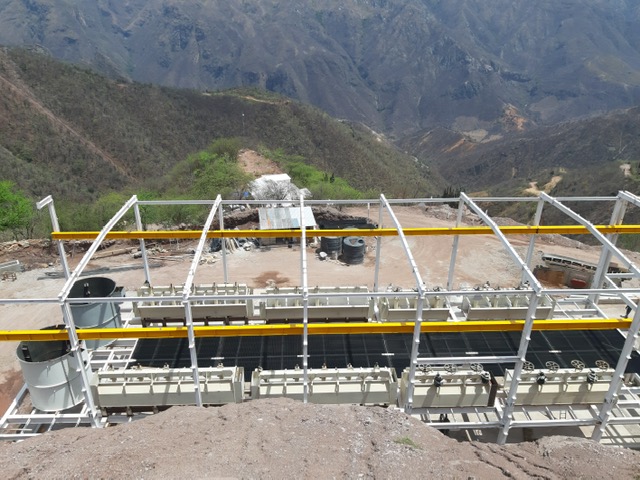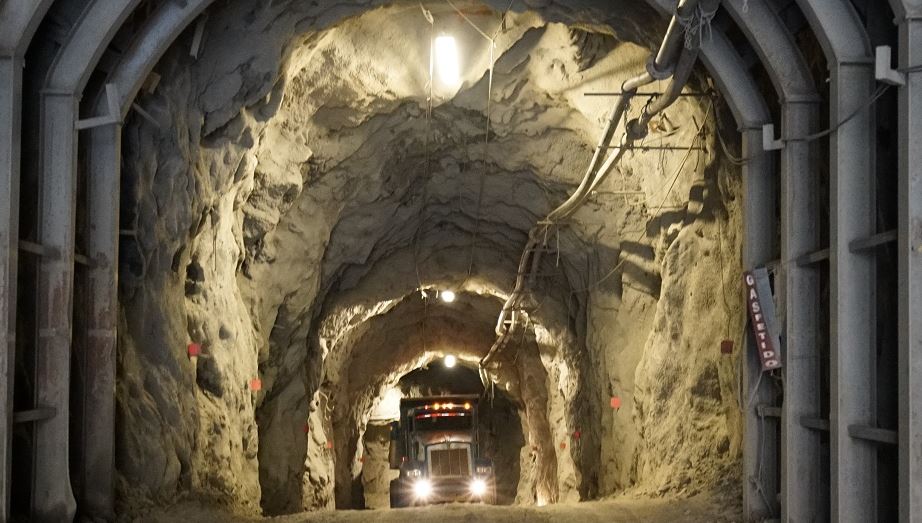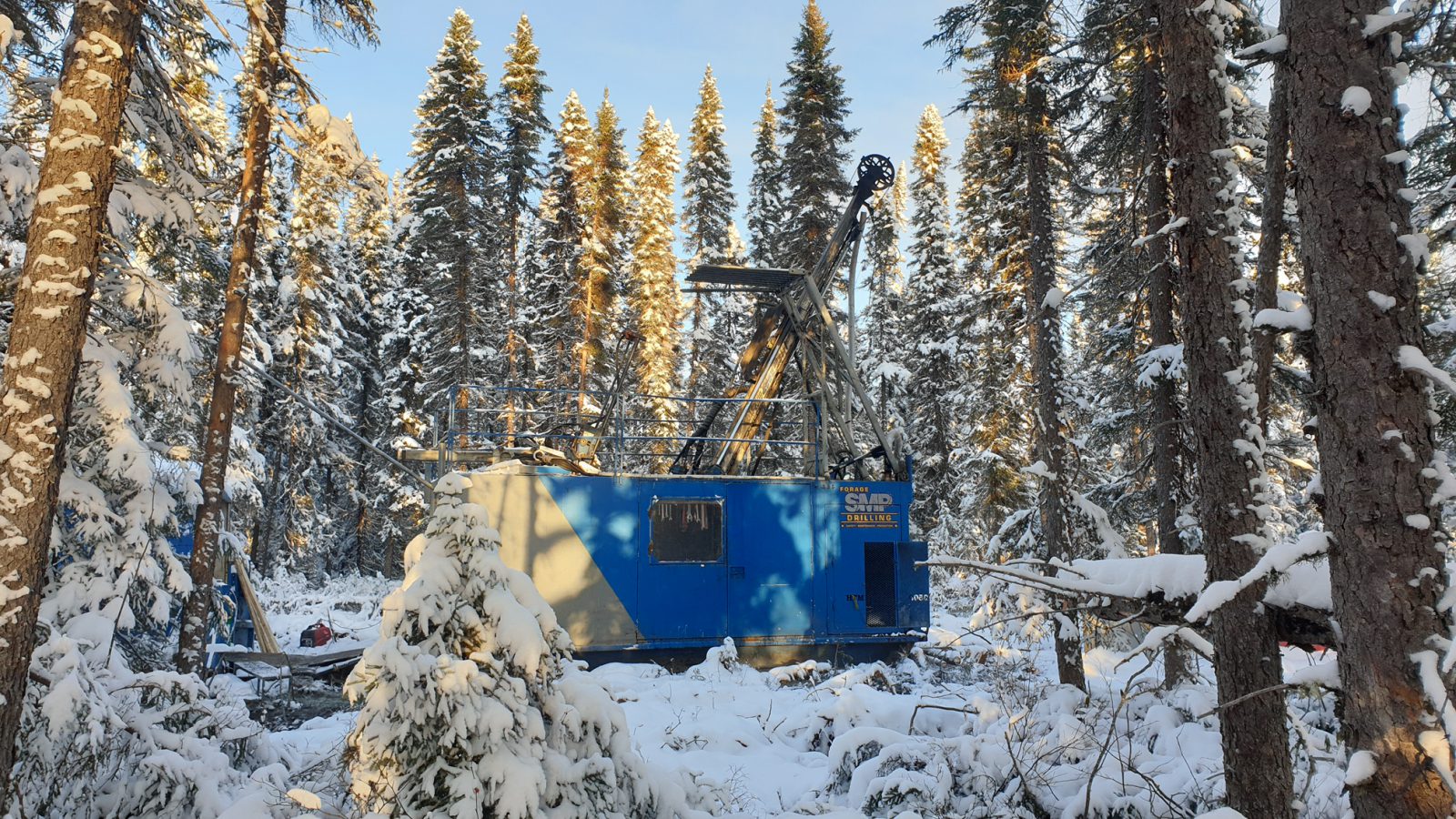Gold rally continues while other sectors falter

By Ellsworth Dickson
The many readers who have been following the recent rise in the price of gold must be a happy bunch.
After hitting a high of US$1,950 an ounce in January 2021, there was a long downtrend trend in the price. Not counting the sudden dip and recovery in early March, gold finally established an upward trend. As of May 31, the bid for gold was US$1,907 an ounce.
The recent positive gold price action is attributed to inflation concerns, extreme volatility of cryptos, the lower U.S. Dollar, 10-year U.S. Treasury Bonds and rising world geopolitical tensions with maybe the worse yet to come.
Speaking of 10-year Treasuries, the yield of 1.61% is down from the long term average of 4.37%. With the annual inflation rate for the United States being 2.6% for the 12 months ended March 2021, I fail to see why investors would buy them knowing they will lose over 1% in the end. I can only speculate that they were purchased for their security.
Some analysts are of the view that the enormous debt of the U.S. and possible increasing inflation could also drive gold prices higher as well as China’s recent approval of allowing huge imports of gold. Meanwhile, Federal Reserve Chair Jerome Powell said that its monetary policy will remain unchanged and downplayed rising inflation fears.
Another development has been the huge consumer interest in gold (and silver) products from various mints. Both the Royal Canadian Mint and the U.S. Mint report almost selling out of certain coins and bars. Will that affect the price of gold?
In its latest report reviewing Q1 2021, the World Gold Council stated, “While the average gold price in Q1 was 13% higher y-o-y, it declined by 4% q-o-q. The opportunity to buy at lower prices, relative to the highs seen last year, boosted consumer demand, particularly as many markets continued to emerge from lockdown and economic recovery lifted sentiment.”
For example, bar and coin investment of 339.5 tonnes (+36% y-o-y) was buoyed by bargain-hunting, as well as by expectations of building inflationary pressures, according to the WGC report.
It’s amazing how many people are buying jewellery during the COVID-19 pandemic. The WGC report noted that jewellery demand of 477.4 tonnes was 52% higher y-o-y. The value of jewellery spending – US$27.5 billion – was the highest for a first quarter since Q1 2013.
According to the World Gold Council, growth in consumer demand was offset by strong outflows from gold-backed ETFs (gold ETFs), which lost 177.9 tonnes in Q1 as higher interest rates and a downward price trend weighed on investor sentiment.
Q1 2021 also saw continued healthy levels of net buying by central banks: global official gold reserves grew by 95.5 tonnes, 23% lower y-o-y, but 20% higher q-o-q.
Gold used in technology grew 11% y-o-y in Q1 as consumer confidence continued to recover. Demand of 81.2 tonnes was just above the five-year quarterly average of 80.9 tonnes.
Another factor that could impact the gold price and that is world governments taking steps to control digital currencies. Crypto currencies have been a competitor for investor dollars and some people have made big money on paper. Others have not done so well. However, some investors are expecting digital currency disruptions will drive investors away from cryptos and into gold sector investments. Maybe it has started. On May 19, Bitcoin fell 30% to US$30,000 from $71,000, its worst one-day loss since March 2020 and has shown volatility since. These huge swings in the value of Bitcoin are much more than volatility in the price of gold. Meanwhile, some countries such as Turkey are banning cryptocurrencies.
To top it off, there is the mass psychology angle or “herd mentality”. There is nothing like investor enthusiasm to drive prices upward – and, of course, that includes gold stocks.
At the current gold price, gold producers can generate good cash flow and numerous gold exploration projects look attractive. While no one knows the future and there are always levels of resistance, these are encouraging bullish signs for gold to continue to perform.
 Triumph Gold Corp. [TIG-TSXV; TIGCF-OTC; 8N61-FSE] is a growth-oriented precious metals exploration and development company with a focus on creating exploring and developing its 100%-owned district-scale Freegold Mountain Project in the Yukon Territory. The property already has over 2 million ounces gold equivalent on three deposits that still have lots of growth in them. Apart from growing these, following up on new exploration discoveries is also high up on the company’s list of priorities.
Triumph Gold Corp. [TIG-TSXV; TIGCF-OTC; 8N61-FSE] is a growth-oriented precious metals exploration and development company with a focus on creating exploring and developing its 100%-owned district-scale Freegold Mountain Project in the Yukon Territory. The property already has over 2 million ounces gold equivalent on three deposits that still have lots of growth in them. Apart from growing these, following up on new exploration discoveries is also high up on the company’s list of priorities.
The company is led by an experienced team with a collective history of exploration to mining success, technical acumen, and capital raising ability. CEO John Anderson raised over $50 million for Triumph Gold. Brian Bower, Lead Director joined the company last summer and has been building an all-star technical team to support Jesse Halle, VP Exploration. With a new office in Kelowna to focus completely on leveraging the 80 years of technical data on the property, including almost 150,000 metres of drilling and the recent 3-D inverse magnetic studies and recent AI work performed my Minerva Geosciences,
Triumph Gold’s flagship project is the Freegold Mountain Project located in the Dawson Range gold-copper belt. The project covers a 200-km2 road accessible portion of the Big Creek Fault, a structural system directly related to gold-rich porphyry, epithermal and related polymetallic vein and skarn mineralization. The district scale project is host to abundant copper-gold prospects, as well as three NI 43-101 compliant mineral deposits.
Freegold Mountain is located in an area that also hosts Western Copper and Gold’s [WRN-TSX] Casino Project as well as Newmont Corp.’s [NGT-TSX; NEM-NYSE] Coffee deposit, and Rockhaven Resources Ltd.’s [RK-TSXV] Klaza gold project. Goldcorp, a Canadian company that subsequently merged with Newmont, gained exposure to the road-accessible Freegold Project by taking a 19.9% stake in Triumph for $6.3 million.
Since Triumph Gold acquired the property in 2006, more than 20 mineralized zones have been identified, and NI 43-101-compliant mineralized resources have been delineated in the Revenue (gold-silver-copper-molybdenum porphyry-related) deposit, the Nucleus (gold-silver-copper) deposit, and the Tinta Hill (gold-silver-copper-lead-zinc vein-related) deposits.
The three deposits host open-pit constrained mineral resources, with two of the deposits (Revenue and Tinta Hill) including deeper, high-grade mineralized resources considered amenable to underground extraction methods.
Recent drilling on two new discoveries include 400 metres of 0.73 g/t gold, 0.23% copper and 0.025% molybdenum within over 600 metres of 0.67 g/t gold, 0.19% copper and 0.032 moly. This sits above another 102 metres of 0.73g/t gold, 0.18% copper and 0.055 moly in the same hole that the company believes is near the source for these impressive grades as it is in higher temperature Potassic altered chalcopyrite and magnetite.
Higher grade (+1.4 g/t gold equivalent) mineralization in the newly discovered Blue Sky Porphyry Breccia is now included in an underground portion of the Revenue resource. Similarly, the new Irene Zone, which is a higher grade epithermal vein discovered in 2018 and confirmed last summer to be part of a 3.7-km long structure where most drilling has confirmed multi-gram gold over multi-metres, will be sure to awaken the market to what this property could host. Triumph recently expanded its Yukon land holdings by striking a deal with Teck Resources Ltd. [TECK.B-TSX; TECK.A-TSX; TECK-NYSE] to acquire the Big Creek copper-gold property in acquisition is strategic and accreditive for both as it is situated along the proposed road extension to either Western Coppers Casino Deposit or Newmonts’ Coffee Project. When the road is built, the additional property will have the same benefits the company currently enjoys from the current infrastructure on the Freegold Mountain Project.
Triumph’s technical team is in the final stages of designing an exploration program for the Freegold Mountain Project this year, which is scheduled to commence in late spring. It said the program will focus on both resource expansion and testing of new targets at Revenue, Nucleus, and the Melissa Zone as well as the Tinta Deposit.
The program will be based on the significant advancements made in the first half of 2021 through a number of successful initiatives. They include the digitization and validation of geological, geochemical and geophysical data in a recently-acquired 3D modelling software, resulting in confirmation and generation of new exploration targets throughout the project area.
The company continues to aggressively explore, building ounces at the existing deposits and evaluating the multitude of other targets located on the Freegold Mountain property.
Meanwhile, Triumph expects to benefit from the Yukon’s Resource Gateway Project, which is expected to deliver $360 million for upgrades to infrastructure in the Dawson Range, including upgrades to the existing Mount Freegold Road.
The 6,464-hectare Tad/Toro property is also expected to benefit from this upgrade as it is located 40 kilometres northwest of Freegold Mountain. Historical drill results from the Main Zone include 1.05 g/t gold and 19.5 g/t silver across 7.15 metres. Values in old trenches that require further investigation include 0.46 g/t gold and 26.1 g/t silver over 37.8 metres.
On May 31, 2021, Triumph Gold shares were trading at 20 cents in a 52-week range of 48 cents and 13 cents leaving the company with a market cap of $27.76 million based on 138.8 million shares outstanding.

Telson Mining Corp. [TSN-TSXV; SOHFF-OTC; TSGN-FSE] is a Canadian mining company that aims to achieve rapid growth by advancing two 100%-owned gold and base metal mining projects in Mexico.
Telson’s flagship Tahuehueto mining project, located in northwestern Durango State, is in an advanced stage of development, with mine construction planned through 2021. Campo Morado, the company’s other key asset, is an underground polymetallic base metal mine with infrastructure, installations, and equipment capable of processing 2,500 tonnes of ore per day. Acquired from Nyrstar Canada (Holdings Ltd.) in June 2017, Campo Morado is located in Guerrero, about 160 kilometres southwest of Mexico City.
When Tahuehueto reaches the commercial production stage next year it will transform Telson, into a high-growth multi-mine primary precious metals producer. In 2022, Telson is forecasting that revenue from gold and silver production will account for 59% of its net revenue, up from 35% in 2021.
The change in focus to precious metals is a move that is likely to result in a re-rating of Telson shares, which last traded at 65 cents as of this writing on May 31, 2021. The company had a 52-week range of 62 cents and $0.075 with a market cap of $136.2 million based on 252.2 million shares outstanding.
Approximately 31% of the outstanding shares are held by management and insiders.
At a gold price of US$1,899 an ounce, Telson’s two projects contain, within measured and indicated resources, 2.51 million gold equivalent ounces, calculated using only gold and silver as priced on February 12, 2021. The estimate excludes inferred resources and base metals.
In keeping with the transition plan, Telson recently signed a letter of intent with a group of lenders, which have agreed to provide the company with US$25 million, allowing the company to complete the construction of its Tahuehueto gold mine and meet debt obligations.
The Funding Syndicate includes Accendo Banco S.A. de C.V., Empress Royalty Corp. and Endeavour Financial.
The US$25 million included an US$8 million equity private placement which closed on March 30, 2021, a US$5 million Empress Royalty Corp. silver stream (100% of the payable silver production from the mine for the first 1.25 million ounces following by a step down to 20% of the silver production) and a US$12 million debt facility from Accendo.
The funding package allows Telson to negotiate a potential restructuring of the company’s loan debt with Trafigura Mexico S.A. de C.V. and Nyrstar as contemplated in a previously announced waiver agreement (see April 17 and June 18, 2020 news releases). In December 2017, Telson secured a US$15 million loan and offtake agreement with Trafigura. The loan facility put Telson in a position to fund construction at the Tahuehueto gold mine.
But Telson was forced to secure a waiver on its loan agreements after Campo Morado was put on care and maintenance due to declining zinc prices and community issues in August 2019. After mining resumed in January 2020, the mine was put on care and maintenance a second time in April and May, 2020 due to Mexican government-mandated COVID-19 restrictions.
During the year ended December 31, 2020, Campo Morado produced 28,031 tonnes of zinc concentrate and 5,794 tonnes of lead concentrate. It ranks as the sixth largest zinc concentrate producer in Mexico.
However, Tahuehueto is Telson’s flagship asset. It is located on a 7,495-hectare land package which remains largely unexplored.
Tahuehueto is a district-scale project with similar multi-vein potential as First Majestic Silver Corp.’s [FR-TSX; AG-NYSE; FMV-FSE] San Dimas silver mine. Proven and Probable Reserves at the site stand at 613,000 ounces of gold equivalent at 5.84 g/t gold equivalent. On top of that is a Measured and Indicated Resources of 955,000 ounces of gold equivalent at 4.86 g/t gold equivalent.
With construction expected to be complete by the end of 2021, Tahuehueto is targeted to produce 42,000 ounces of gold equivalent (AuEq) annually at an all-in-sustaining cost of US$808 an ounce AuEq over the first five years.
Existing reserves are expected to support a mining operation for nine years. But based on Measured and Indicated Resources outlined so far, the project’s lifespan could run to 20 years.
 Moneta Porcupine Mines Inc.‘s [ME-TSX; MPUCF-OTC; MOP-XETRA] objective is to uncover the exploration potential of its Tower Gold Project located in the prolific Timmins, Ontario gold camp, an area that has historically produced over 85 million ounces of gold.
Moneta Porcupine Mines Inc.‘s [ME-TSX; MPUCF-OTC; MOP-XETRA] objective is to uncover the exploration potential of its Tower Gold Project located in the prolific Timmins, Ontario gold camp, an area that has historically produced over 85 million ounces of gold.
To that end, the company has combined its Golden Highway Project with the adjacent Golden Bear assets, including the Garrison Project, from O3 Mining Inc. [OIII-TSXV]. The combined and significantly enlarged gold project is now collectively known as the Tower Gold Project located 100 km east of Timmins. The combined 200 km2 land package hosts a total indicated resource of 3,967,000 ounces contained gold and inferred resources of 4,399,000 ounces contained gold.
This now means that Moneta Porcupine holds a 100% interest in one of the largest undeveloped gold resources in North America covering over 17 km strike length and 4 splays of the gold rich Destor Porcupine Fault Zone. The project hosts both high grade underground resources, amenable to bulk tonnage underground mining methods, and near surface economic open pit resources over a combined strike length of 8 km. The majority of gold is hosted within a Timiskaming age sedimentary basin hosting a regional banded iron formation, adjacent to which the majority of ounces occur, with the remaining 9 km and adjacent splays untested. Moneta is currently testing the large resource expansion potential to define the total gold endowment on the Tower Gold project and expects to have a new expanded updated resource upon completion of the current drill program.
Economic open pit resources are comprised of a total of 3,335,000 ounces of indicated resources contained within 116.7 million tonnes grading 0.89 g/t gold and 2,270,000 ounces of inferred resources contained within 79.4 million tonnes of 0.89 g/t gold, at a cut-off grade of 0.30 g/t gold. The project also includes underground resources comprised of 632,000 ounces of indicated resources contained within 4.9 million tonnes of 4.05 g/t gold and 2,129,000 ounces of inferred underground resources within 15.7 million tonnes of 4.21 g/t gold, at a 3.0 g/t gold cut-off.
Recent PEA studies on the underground South West deposit at the Tower Gold project by Moneta in September, 2020 a project amenable to bulk underground mining demonstrated robust economics at a cash cost of US$590/oz at a gold price of US$1,500/oz. A recent PEA study on the Garrison deposits in December 2020 also proved robust economics with cash costs of $720/oz gold. It is expected that the expanded resource base from this years’ 70,000 m drill program will result in a significantly expanded scope and production profile in the planned updated PEA study which will address the combined project.
The project is within trucking distance of six mills, each of which could potentially offer toll milling services.
Moneta is well financed having completed a $22.6 million bought deal equity financing at the time of the Garrison acquisition and is fully funded to drill test the expansion potential of the integrated project.
Gary O’Connor, CEO, said, “With the completion of the current 70,000-metre drill program, we plan to update the resource estimate later this year followed by an updated and expanded preliminary economic assessment study (PEA) on the combined projects with a significantly larger production profile.”
Moneta Porcupine Mines’ management team combines over 35 years of financial management, geology, and mineral exploration experience. Moneta’s CEO, Gary O’Connor, has a proven track record of project development and brings world-class expertise in mining investment. Together, he and his team are preparing the company for outstanding economic growth and mineral exploration opportunities.
The company is supported by various institutional shareholders, including Scotia (1832), Dundee-Goodman, Eric Sprott, RBC, Mackenzie, K2, J. Zechner and US Global. Moneta Porcupine has 555,444,336 shares outstanding.






